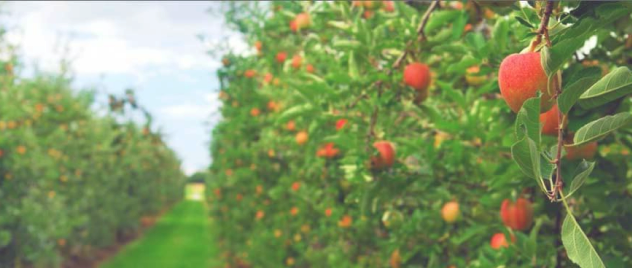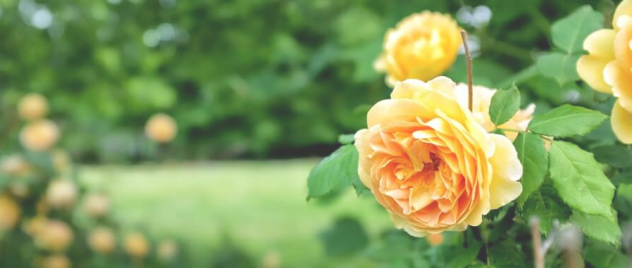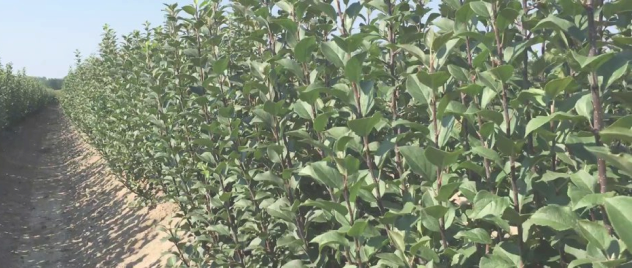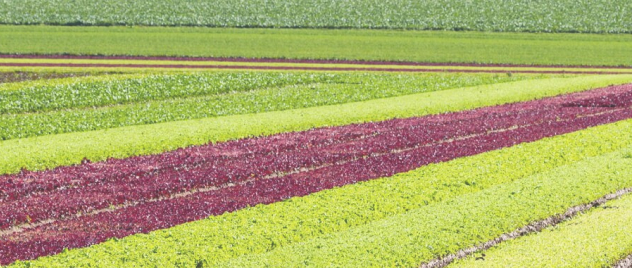WALNUTS
Walnut (Juglans regia) belongs to the Juglans genus in the Juglandaceae family. Other than nutritional value, walnut has aesthetic and commercial value, unlike other fruit-bearing plants. The fruit itself is very nutritious containing omega-3 fatty acids great for lowering cholesterol. Rich in vitamin E, selenium, copper, and also vitamin B1, iron, niacin, essential oils, carotenoids, protein, and amino acids, beneficial to the cardiovascular system. Walnut kernels are mostly used fresh and are highly sought after for processing in confectionery, cosmetics, and other industries. The timber of the walnut tree is highly valued as a wood for furniture making which makes it highly profitable.
WALNUT
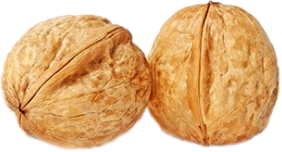
PLANTING SYSTEMS
The distance depends on the walnut variety, its vigour, type of fruiting (lateral or terminal), as well as on the cultivation technology. Intensive systems require machine pruning every 3 years, while semi-intensive ones are rare and often manually pruned due to the greater distance. Both technologies require regular application of all agro-technical measures: watering, fertilizing, pruning, and chemical protection.
In walnut plantations, seedlings can be arranged in a square, rectangle, triangle, and isohypses.
GROWING SYSTEMS
SQUARE ARRANGEMENT
In this system, the trees are planted in straight rows, with an equal distance between the rows and between the plants at a right angle. This way, the fruit trees are equally exposed to light, have the same nutrient space, and provide the easiest tillage in both directions. The pest control is easy to perform and it is easy to communicate through the orchard. Spacing between the trees for semi-intensive and extensive plantations should be 12-15 m, depending on the vigour of the variety.
RECTANGULAR ARRANGEMENT
The distance between the rows is larger than the distance between the trees in rows. This way the crown of fruit trees often intersects at one moment of its life. This way of arranging the seedlings enables inter-row cultivation in one direction, and the rows are positioned to the feasibility of mechanized tillage and the fight against plant pests and pathogens. If the field conditions allow, the direction of the rows is adjusted according to the best lighting, ie. mostly in the north-south direction. This system is used for intensive, but also for semi-intensive and extensive plantations, experience shows that the distances should be at least 10x12m, and even better 10x14m or 12x15m, depending on the vigour of the variety.
TRIANGULAR ARRANGEMENT
This system is used when a pyramidal crown is formed. It is characteristic for semi-intensive and extensive plantations and the distances should be 12-15 m, depending on the vigour of the variety. The seedlings have an equal distance in all directions and it is possible to cultivate the land in young plantations in three directions. Here walnuts are planted on the tops of an equilateral triangle. The trees of every other row are in the rows of alternating rows. In that way, there are 15% more seedlings on the same surface, but this is understood to be to the detriment of nutritious space and especially sunshine.
ISOHYPSE ARRANGEMENT
The trees are planted according to the isohypse of the terrain applied on steep slopes, where there is a danger of erosion. With this arrangement, the distance between the rows is uneven, uneven rows often appear, which makes processing and other agro-technical measures difficult. The arrangement of fruit trees in the isohypse arrangement is adjusted to the slope of the terrain, but in such a way as to avoid the positioning of short rows. Therefore, it is much better to break the rows at certain points and adjust to the geometric terraces, instead of inserting short rows.
See our full SELECTION of WALNUT TREES we have in our offer
FRANQUETTE
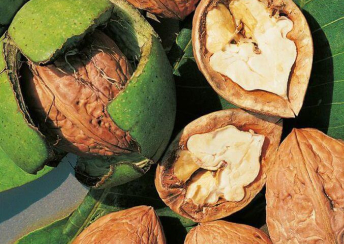
TREE:
A large, mildly-vigorous, upright tree that gives fairly productive yields. Easy to grow, with a medium growth rate. Very little pruning is recommended. A late bearer upon planting and also a late-leafing variety, thus protected against late spring frosts. Thrives best in full sun.
POLLINATORS:
Self-fertile, but gives amazing results when planted near another variety (particularly when the tree is young), such as Chandler. Often used as a pollinator for Chandler.
NUT APPEARANCE:
A flattened shape walnut with a good caliber. A medium-thin, well-sealed shell. The kernel is light in color as well as in weight. Good taste, strong nut, sweet flavor.
NUT SIZE: Medium to large.
HARVEST:
Mid-September.
COMMERCIAL USE:
Used for fresh consumption, in desserts, and in the processing industry.
FERNETTE
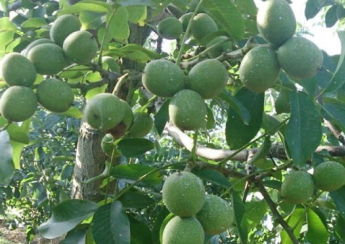
TREE:
Medium vigorous. Early blooming and a late leafing variety, thus protected against late spring frosts. Grows at a medium growth rate. Early bearing, starts yielding in the 3rd or 4th year after planting. Has high productivity and heavier crops than those of Franquette’s. Thrives best in partial to full sun. Tolerable to many soil types.
POLLINATORS:
Self-fertile. A suitable pollinator for Fernor and Chandler, as well as for other varieties.
NUT APPEARANCE:
Globular nuts with a thin, fragile shell. Predominantly white kernels (80-85%), easily extracted from the shell. Large in size and tasty.
NUT SIZE: Large.
HARVEST:
End of September to the beginning of October.
COMMERCIAL USE:
Best when consumed fresh. Suitable for cooking purposes.
FERNOR
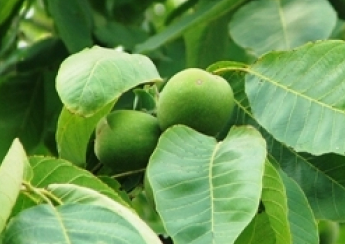
TREE:
Grows upright at a medium growth rate with medium vigour. An early flowering and a late leafing variety, thus protected against late spring frosts. An early bearer starts yielding in the 3rd or 4th year after planting. It has regular and very high yields. Tolerates many soil types. Prefers partial to full sun. Drought resistant.
POLLINATORS:
Self-fertile. A good pollinator for other nut varieties. Fernette and Franquette are suitable pollinators. Plant 1 Fernette tree on every 10th Fernor.
NUT APPEARANCE:
Globular nuts with a light-colored, thin to medium thick shell and a beaded seam. The kernel is light in color and easily extracted from the shell.
NUT SIZE: Medium to large.
HARVEST:
End of September to early October.
COMMERCIAL USE:
Early starts yielding and has excellent kernel quality. Best when consumed fresh, as well as used for cooking purposes.
CHANDLER

TREE:
The most planted variety worldwide and one of the most popular ones when it comes to walnuts. Moderately to very vigorous and semi-erect, with a medium growth rate. It yields extremely abundantly. An early bearer starts bearing two to three years after planting. Late-leafing and a late flowering variety. Pruning is advised.
POLLINATORS:
Partly self-fertile. Franquette is the best pollinator for this variety.
NUT APPEARANCE:
An oval, thin shell with a smooth surface, light-colored, well-sealed. The high-quality kernels are light in color, easily detached from the shell and split in halves, with a mild flavor.
NUT SIZE: Large.
HARVEST:
End of September to mid-October.
COMMERCIAL USE:
A very productive variety. Used for fresh consumption, in desserts, and in the processing industry.

